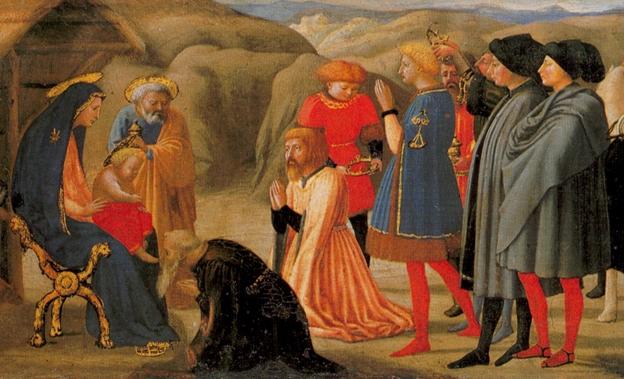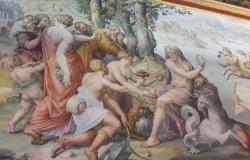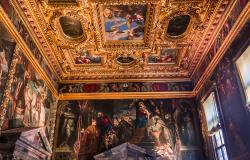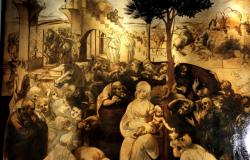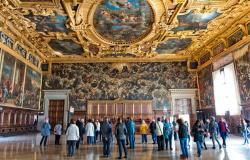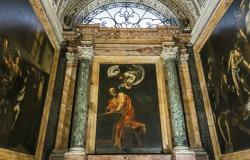Words by Aleid Ford
Tommaso di Ser Giovanni di Mone (1401-1428) was the shooting star in the Florentine firmament, gone almost as soon as his brilliance had been seen. Standing on the threshold of the 15th century, the artist (whose nickname was Masaccio, short for Tommaso, meaning "clumsy" or "messy" Tom) is often regarded as the founder of Italian Renaissance painting, ushering in the classical revival. His work suggests a preference for the simple and immediate, both qualities he inherited from Giotto. Masaccio was also guided by the sculpture of his day, drawing inspiration particularly from the works of Donatello.
One of the most intriguing legacies of Masaccio’s short life is the altarpiece he executed for a wealthy notary in the church of Santa Maria del Carmine in Pisa. The original polyptych altarpiece was dispersed when the church was remodelled in the 16th century. The Adoration of the Magi predella is now in the State Museum in Berlin and would have been placed under the panel of the Virgin and Child, now in the National Gallery, London. The Adoration panel is Masaccio’s first narrative religious painting and is completed with admirable conciseness. The oldest King kneels before the Virgin and Child and there is a wonderful sense of human warmth and intimacy between the figures. The fluid line created by the careful positioning of the three Kings guides the eye towards the two striking figures swathed in grey. These are supposed portraits of the patron and his son and hint at the burgeoning awareness among commissioners of the social and political potential of art.
Masaccio emulates the pure radiance of Giotto’s Arena frescoes and at the same time evolves the sculptural mass of the figures and the momentous sense of drama. Throughout his oeuvre, Masaccio’s style is grand but also earthy, steeped in a profound sense of realism and, as the Adoration reveals, perhaps his greatest skill was in carefully narrowing the conceptual gap between spectator and sacred subject through a unifying depiction in light and shade. Masaccio’s untimely death at the age 27 cast a long shadow over Florentine art, and as Brunelleschi, architect of the Cathedral's Dome, lamented, the city of Florence had ‘suffered a great loss’.
